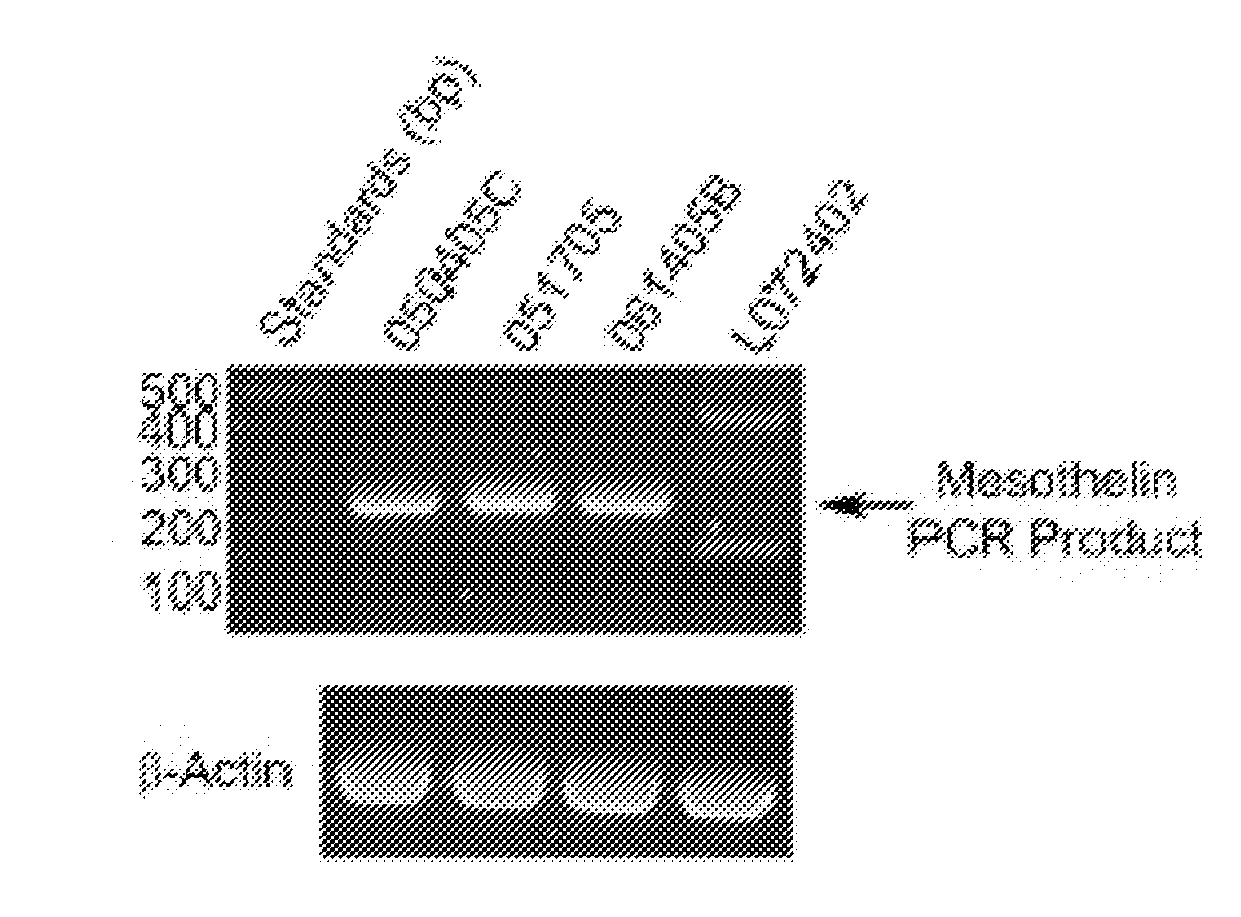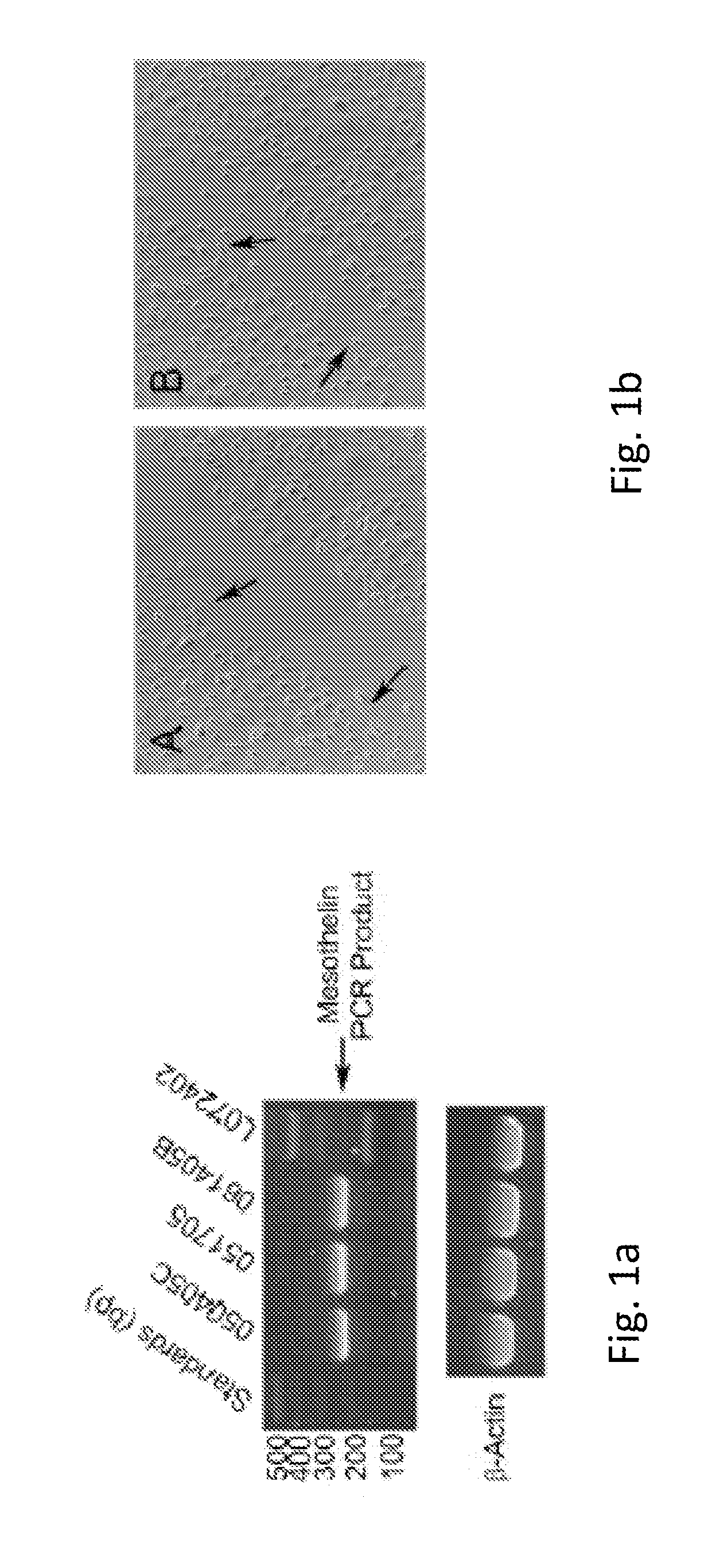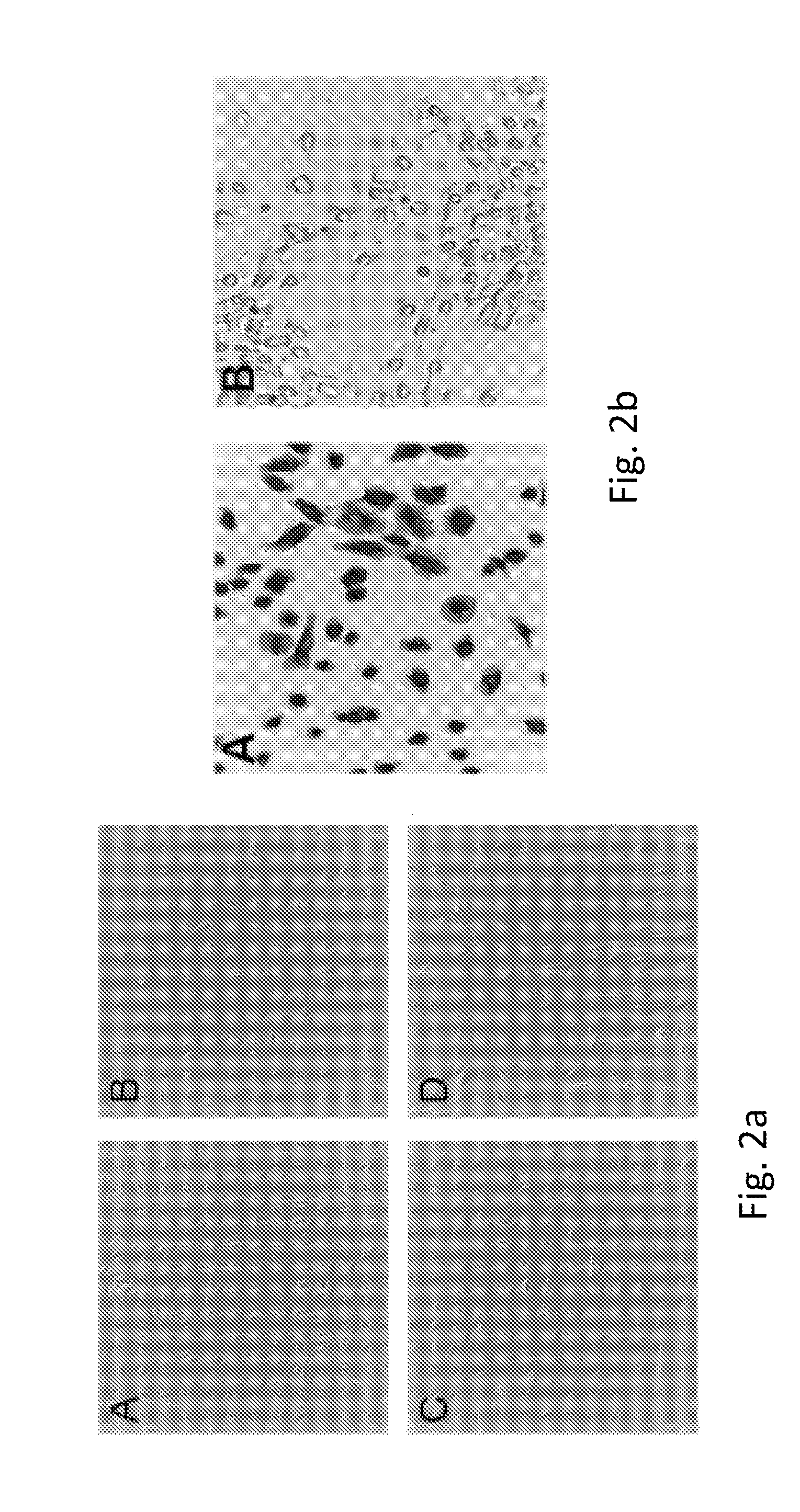Human omental mesothelial cells, methods of isolation and uses thereof
a technology of omental mesothelial cells and methods, applied in the field of human omental mesothelial cells, methods of isolation and uses thereof, can solve the problems of peritoneal dialysis failure, fibrin deposition, peritoneal adhesion, etc., and achieve the effect of preventing peritoneal dialysis failure, preventing peritoneal dialysis, and preventing peritoneal dialysis
- Summary
- Abstract
- Description
- Claims
- Application Information
AI Technical Summary
Benefits of technology
Problems solved by technology
Method used
Image
Examples
example 1
[0072]A sample approximately 10 grams of omental tissue is removed from the greater or lesser omentum of a subject. The tissue piece is transferred to a cryovial and placed in a liquid nitrogen freezer for long term storage or used immediately for mesothelial cell isolation.
[0073]The thawed or freshly isolated tissue sample is tested for pathogens and the test sample precisely weighed. The tissue sample is then mixed with an equal volume of a solution containing of 0.25% trypsin and incubated undisturbed for 20 minutes at 23-25° C. The tissue fragments are then removed from the solution and the trypsin solution containing the mesothelial cell suspension is centrifuged at 1200 rpm for 5 minutes at 20° C. The resulting pellet containing mesothelial cells is resuspended in DMEM-F12 medium containing fetal bovine serum (5-10%) and epidermal growth factor (5 ng / ml), and cells are plated in tissue cultureware. Mesothelial cells can then be expanded in Media 199 containing 5% fetal bovine ...
example 2
[0074]Mesothelin is expressed in the purified omental mesothelial cells. This was shown by reverse-transcription polymerase chain reaction (RT-PCR) assay, using RNA isolated from 3 unique donor lots of omental mesothelial cells. FIG. 1a shows mesothelin expression analyzed by RT-PCR. 1 microgram of total RNA from three mesothelial lots and one preadipocytes lot (L072402) was used as a template for RT-PCR reaction. Primers for mesothelin or Beta-actin were added to assess expression of each gene.
example 3
[0075]Mesothelial cells are known to be involved in wound healing. As shown in FIG. 1b, mesothelial cells were grown on collagen coated plates and the cell monolayer scrapped to mimic wounding. Fibroblastic mesothelial cells were recruited to the wound site after 3 hours (A) and 18 hours (B). Fibroblast mesothelial cells are indicated by arrows.
PUM
| Property | Measurement | Unit |
|---|---|---|
| survival time | aaaaa | aaaaa |
| temperature | aaaaa | aaaaa |
| physical | aaaaa | aaaaa |
Abstract
Description
Claims
Application Information
 Login to View More
Login to View More - R&D
- Intellectual Property
- Life Sciences
- Materials
- Tech Scout
- Unparalleled Data Quality
- Higher Quality Content
- 60% Fewer Hallucinations
Browse by: Latest US Patents, China's latest patents, Technical Efficacy Thesaurus, Application Domain, Technology Topic, Popular Technical Reports.
© 2025 PatSnap. All rights reserved.Legal|Privacy policy|Modern Slavery Act Transparency Statement|Sitemap|About US| Contact US: help@patsnap.com



